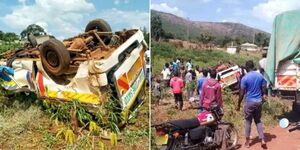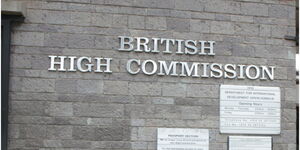The Kenya Institute for Public Policy Research (KIPPRA) and Analysis, in their Urban Economic Growth in Africa report dated Friday, February 17, exposed 11 blunders behind traffic jam in Nairobi and land issues.
According to the report, Nairobi residents using private cars had better access to employment opportunities than those using public service vehicles (PSVs) due to traffic snarl ups.
In the report, KIPPRA attributed Nairobi traffic snarl-up menace to poor road networks in areas outside Central Business District (CBD).
The report faulted the government for only concentrating on roads within CBD.
"Nairobi CBD is connected with road networks that are in good condition compared to the periphery, which is characterized by fair to poor roads, indicative of the existing constraints in connecting the city to the suburbs," KIPPRA's report read in part.
"Traffic congestion affects accessibility by causing variability in travel speed and times," the report further indicated.
It also raised concerns over railway system, which is unevenly distributed and covers only a few subcounties and wards.
Lack of proper policies on matatu systems in the country was cited among the factors leading to traffic jams in various city routes.
Cartel in the matatu sector were also blamed for the increased traffic snarl-ups in the city.
Besides traffic, KIPPRA observed that mismatch between zoning and land use in Nairobi City County had contributed to a shortage of land, especially for public infrastructure, resulting in a delay in projects and demolition of buildings and structures erected on wayleaves.
"A lack of planning, inappropriate land use regulations, unclear land rights, conflicts between informal and formal markets, and legacy issues all can contribute to informal fragmentation of land which is disconnected from trunk infrastructure and basic services," the survey indicated.
To address the challenges, KIPPRA advised Governor Johnson Sakaja's administration to expedite the updating of the land register land appraisal system and resolve pending land conflicts.
To address transport systems, KIPRRA implored the government to improve the quality of roads in the informal areas and expand the road network in the outer parts of Nairobi to improve access.
"The county needs to embed public space in Nairobi’s urban planning and further allocate resources for the creation of new public spaces as well as protection, management, and maintenance of existing spaces. In addition, urban planning tools, such as land
regeneration and urban renewal, must be used to create more public spaces," it added.
"A land value index should also be developed to compensate the county for mandatory acquisition of land for government projects and investments and land value tax," it further recommended.
Due to booming developments in suburb estates such as Westland, Loresho and Karen, KIPPRA advised the county to develop frameworks to harmonise development policies.
According to KIPPRA, the policies would help President William Ruto's administration and Sakaja address the issue of squatters, land grabbing and further solve traffic jam which they argued was leading to cases of unemployment.












